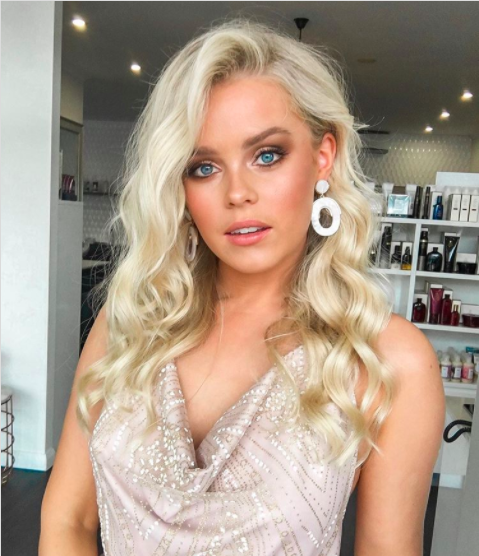Modelling On Social Media During A Pandemic
With runways cancelled, print magazines closed and campaigns postponed, where can an aspiring model find work or gain enough exposure to build a career?
You’ve probably guessed it; modelling and social media are more intertwined than ever during a pandemic. Influencers of all scales are becoming the main platform for advertisers and brands.
Studies show that people between 14-51 years spend 60% more time online, on social media. More specifically, Facebook and Instagram traffic is up 40% for consumers under 35.
Even businesses have adopted a work-from-home model and even though times are hard, people have not stopped consuming.
With online shopping being the sole getaway many brands are seeing an increase in demand.
At the same time, the work from home and social distancing models are affecting big productions negatively, putting the power in the hands of the individual.



The market is changing
As Instagram offers increased visibility to individuals, more and more labels are approaching popular or cool faces within smaller local communities.
This goes hand in hand with the realisation across brands that they need to connect with customers in more original and direct ways.
Brands can choose an influencer or an aspiring fashion model who can appropriately showcase their product.
While famous travel bloggers and international models have ceased to receive thousands of dollars to advertise bathing suits in exotic destinations; we see fresh faces and different body types advertising lingerie from their living rooms. Modelling happens exclusively on social media during a pandemic.
As people’s personal accounts have less limitations than magazines or what an advertising campaign would require, an influencer can showcase a wider range of product categories to their audience.
Opportunities to partner with fashion, health and fitness, beauty and tech brands arise every day.
Agencies have also increased their online model searches, looking for the next out-of-this-world or completely relatable character to add on their list as consumers are trying to connect on a more genuine level.
Marketers are not just focused for the superstar influencers with millions of followers, but online creators or models with smaller, specific audiences and expertise. ‘Influencing’ is not a side-gig anymore, it’s an actual job.
In fact, less than a month ago, the Australian Influencer Marketing Council (AIMCO) published its first set of guidelines for the industry that includes everything from advertising disclosure requirements, to intellectual property rights and metrics for the success of influencers.
Study sources: Amra and Elma, Kantar, Business Insider, Forbes



With more people online and active than ever on Instagram, Influencer posts appear to be gaining more engagement and an organic increase in followers.
Influencers are the staple of the millennial generation, combining tech savviness with being vocal and becoming one’s own inspiration.
The fashion and beauty industries were the first to succumb to the power of influencers.
In the late 2000s many brands and marketers started allocated big chunks of their advertising budget to bloggers and Instagram personalities with large and highly engaged following.
Even modelling and acting agencies started scouting talent through social media, offering contracts to people who were already popular or had something super interesting and unique about their appearance and personality.
Even though a mini war had been waging on Influencers that saw many supporting contradictory brands or ethics lose their credibility, the majority of the audience still believes that even sponsored posts coming from a person are more genuine than an ad.
The influencers that maintained an honest approach are still seen as more credible.
Through platforms like Tik Tok and YouTube plugged in to Instagram, more microInfluencers are popping up approaching more niches or local audiences.



What to do
Refine your social media presence; curate your feed so that it looks professional without losing your personal touch. Choose and stick to an aesthetic
Let people know that you are a model in your bio or captions. Anyone able to stand in front of a camera can model!
Embrace your insecurities and be honest and vulnerable with your audience. Let them in!
Show off your uniqueness. In the time of diversity and inclusivity what you might think separates you could be the thing that helps you connect: Are you petite? Are you curvy?
Take advantage of your gap tooth, your freckles, your identity!
Be transparent about your relationships through clearly labelling what is sponsorship and what is not
Reply to DMs and comments as if you would respond to a friend. People are seeking connection more than ever. Be that connection. Become that new friend!
Monitor your engagement through Instagram Insights and Analytics. Keep track of your stats!



What not to do
Do not buy “fake followers” as those accounts remain inactive and actually lower your engagement making it difficult for brands to verify your audience
Avoid sponsorships by too many brands or competing brands as your feed might look saturated and untrustworthy. Pick your endorsements carefully and don’t sell out.
Check the Federal Trade Commission’s demands for disclosure when you are receiving payment for an endorsement.
Keep supporting brands and causes that you honestly believe in regardless of payment.
Don’t be shy. Overcome your fears and build your confidence through breaking through the walls you have built.
If this has always been something you wanted to do, don’t waste time. Rather than wonder how and what to create, simply start documenting. Once you get the hang of it, it will all come naturally.
Get in Touch
We would love to create a unique modelling portfolio just for you!
